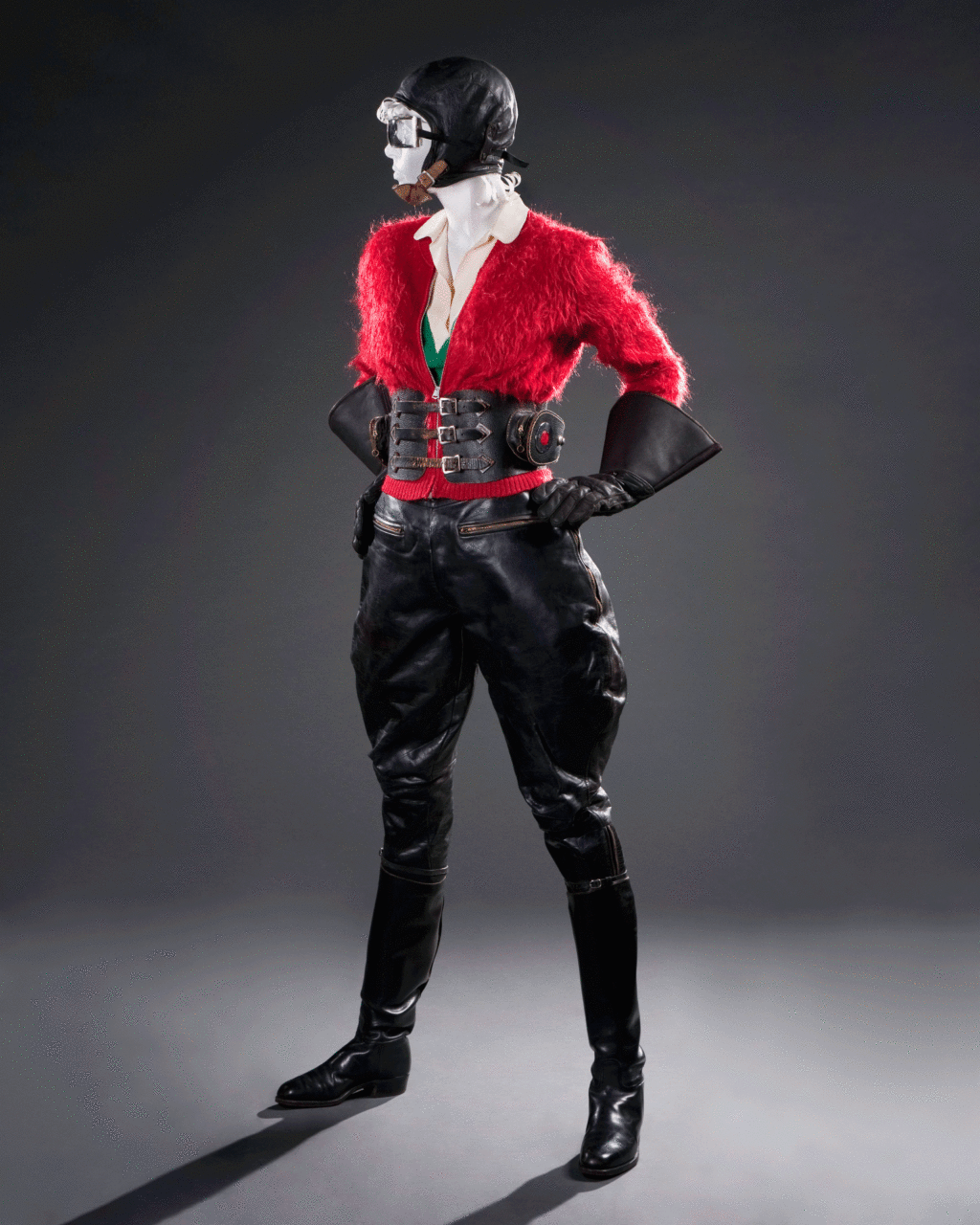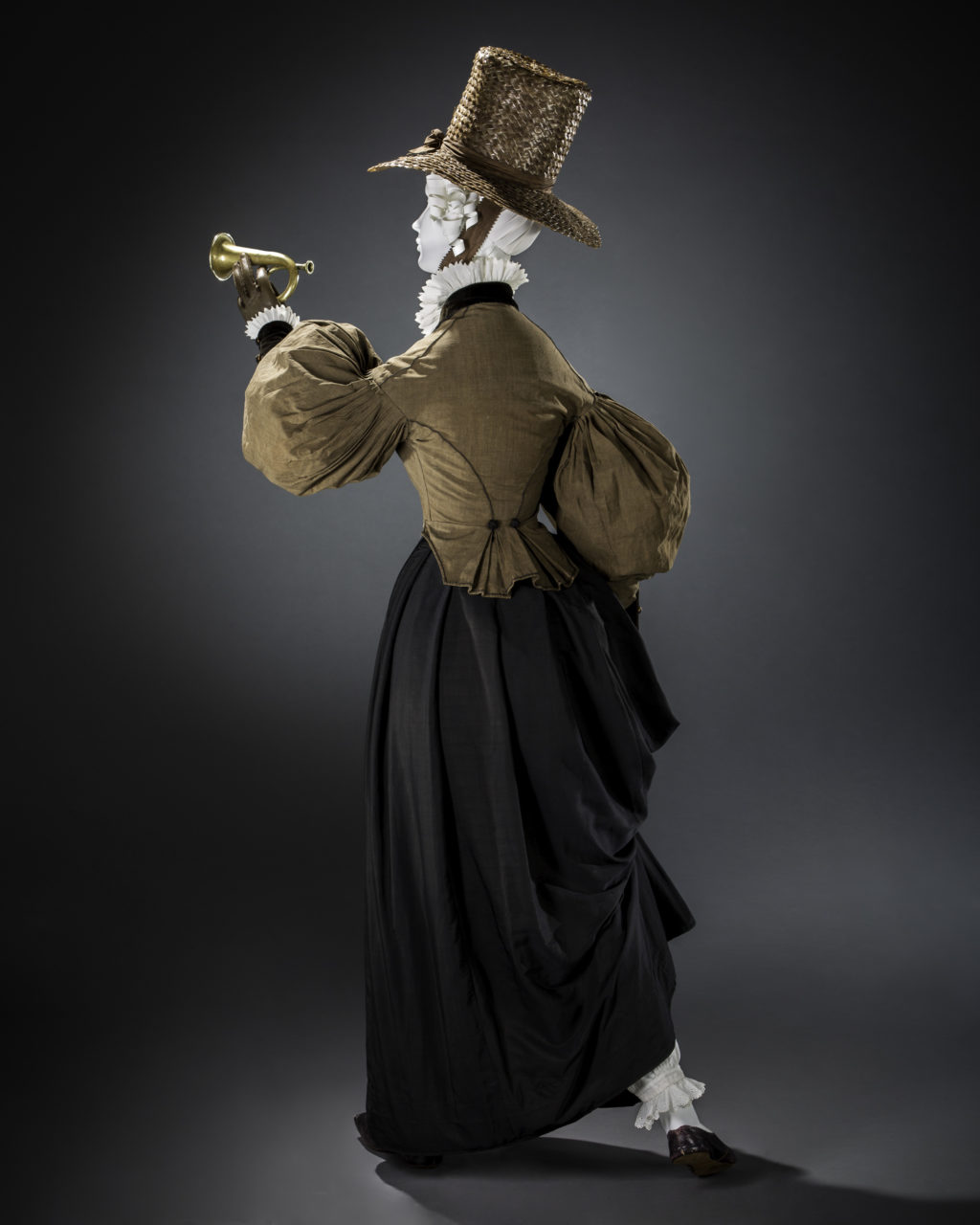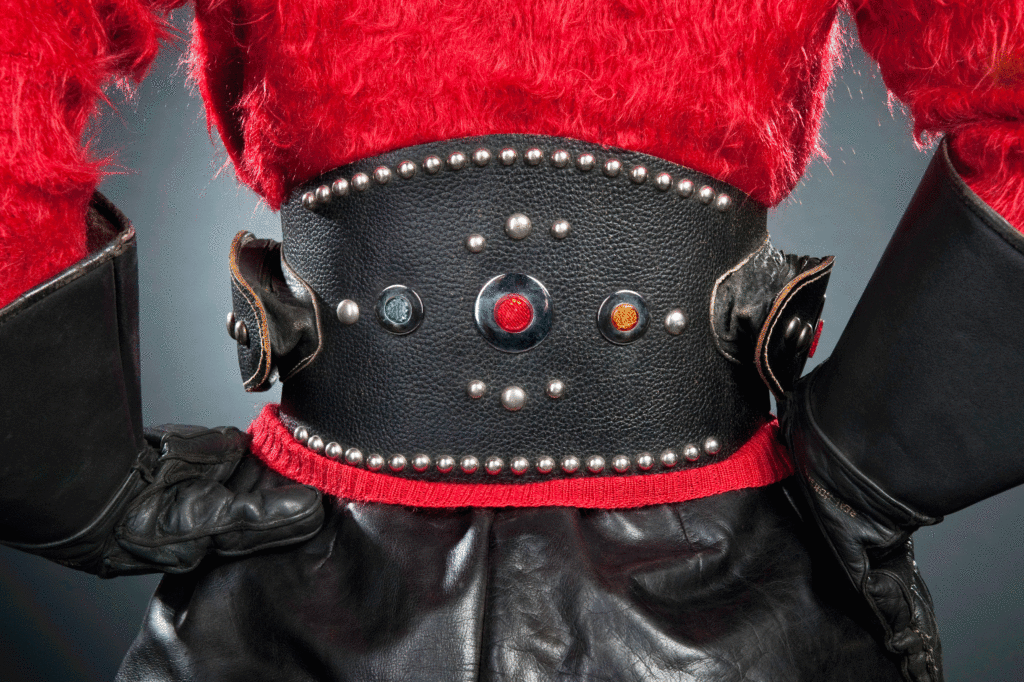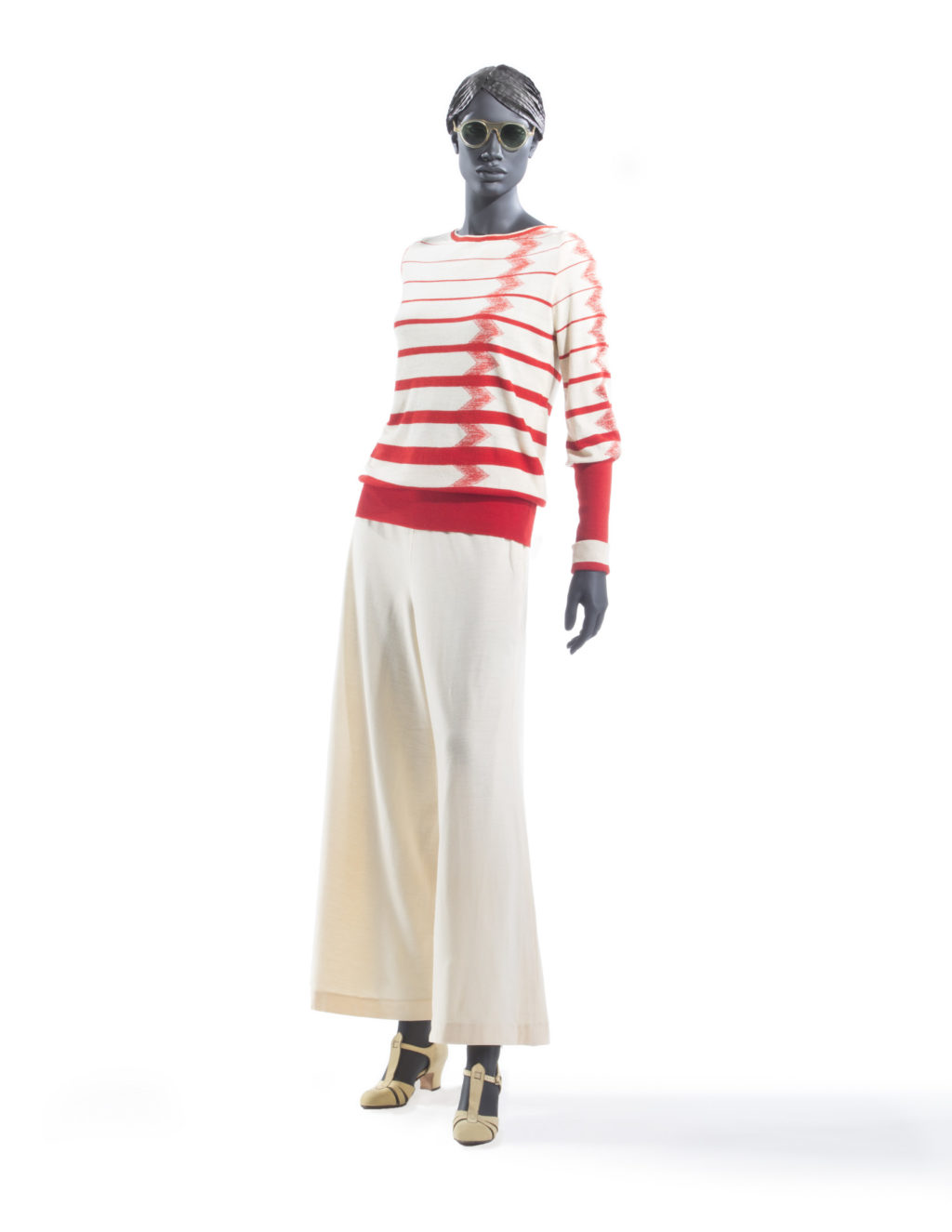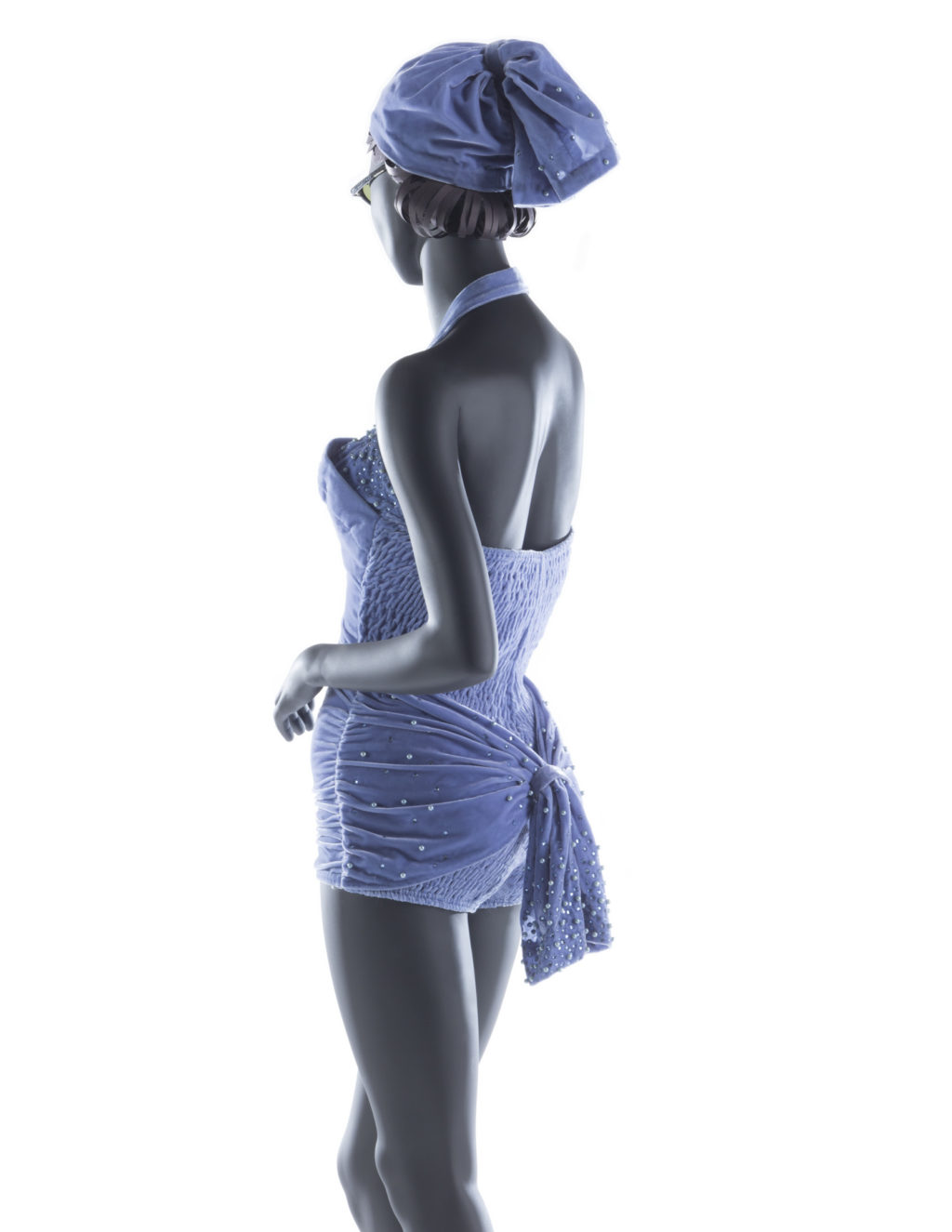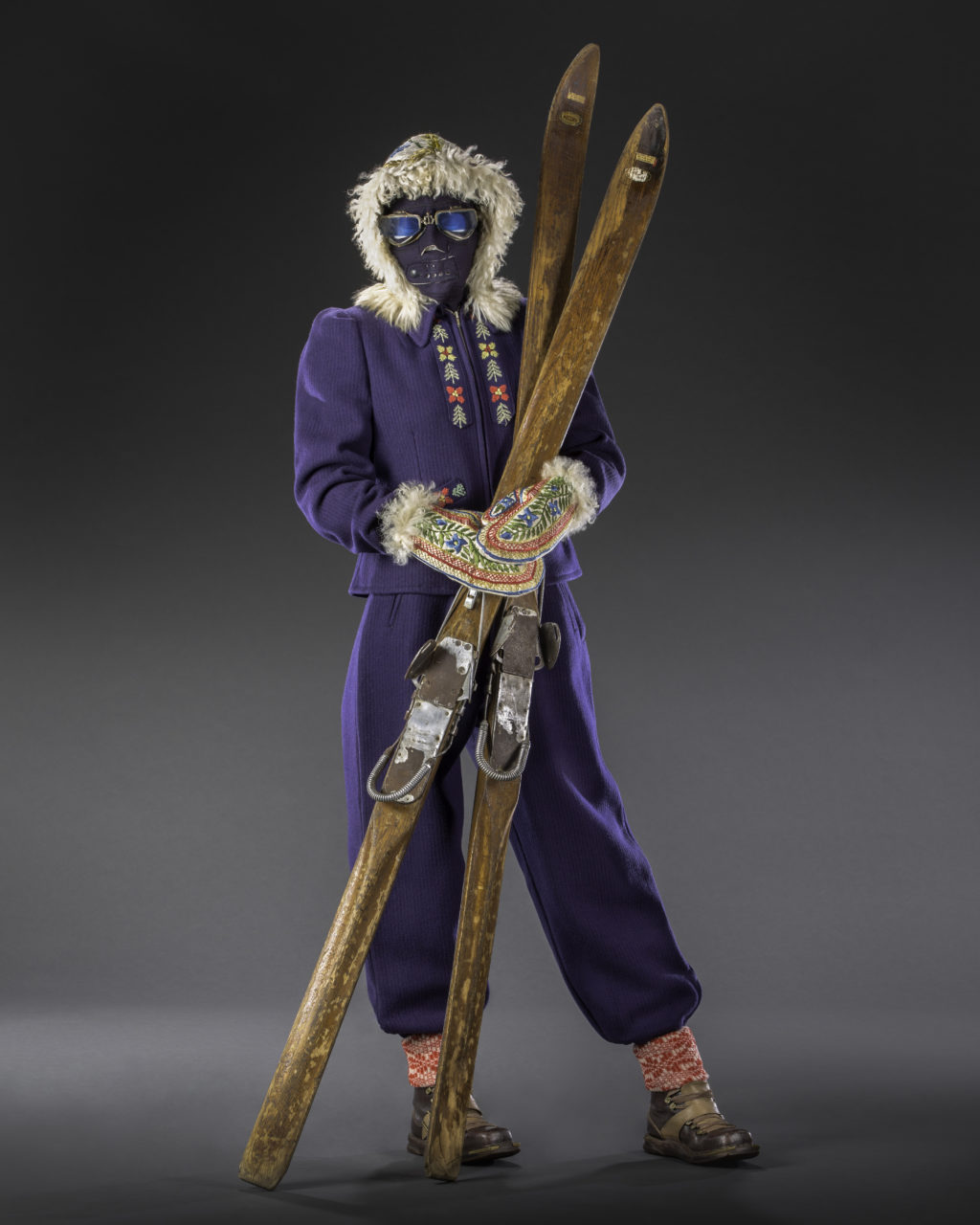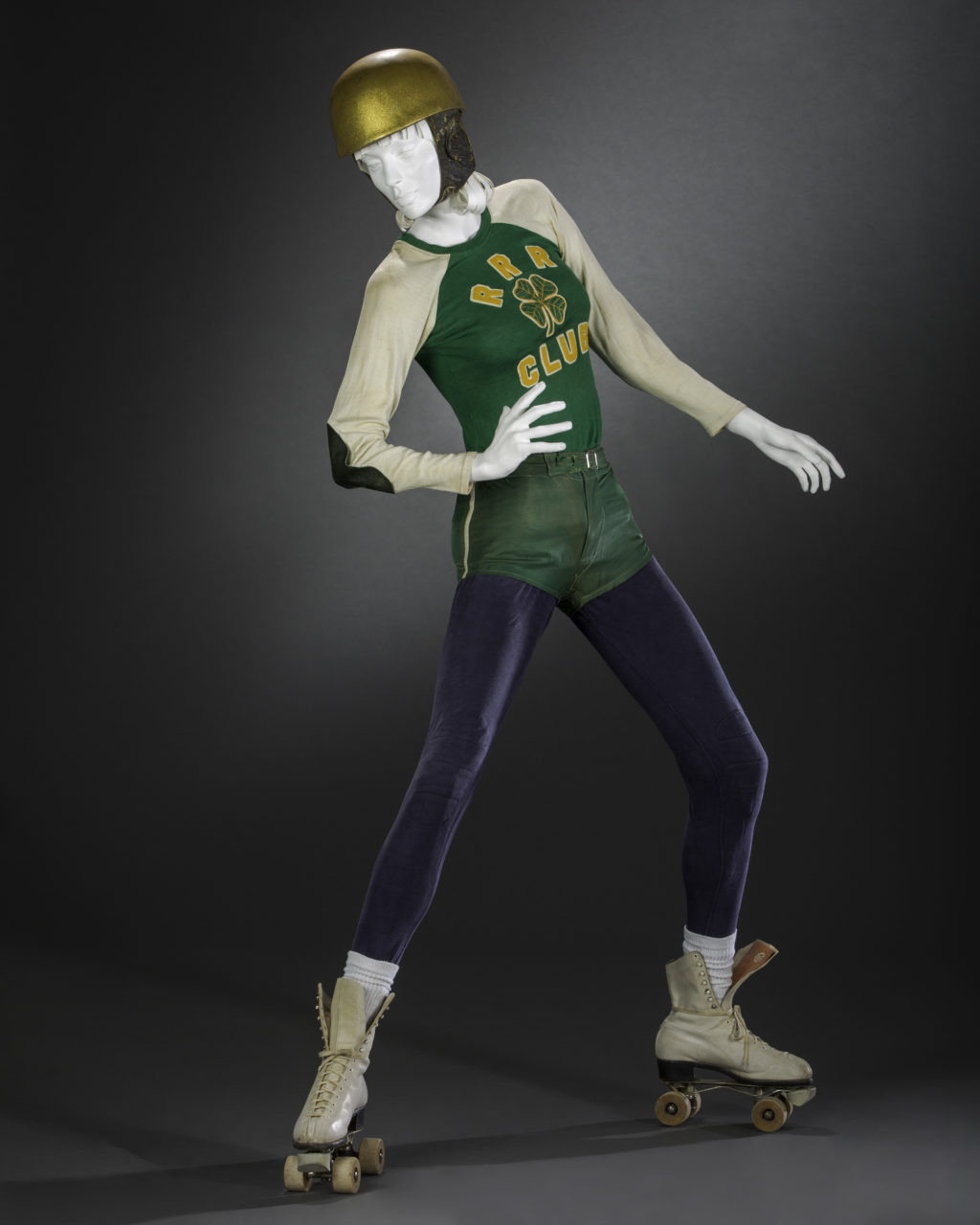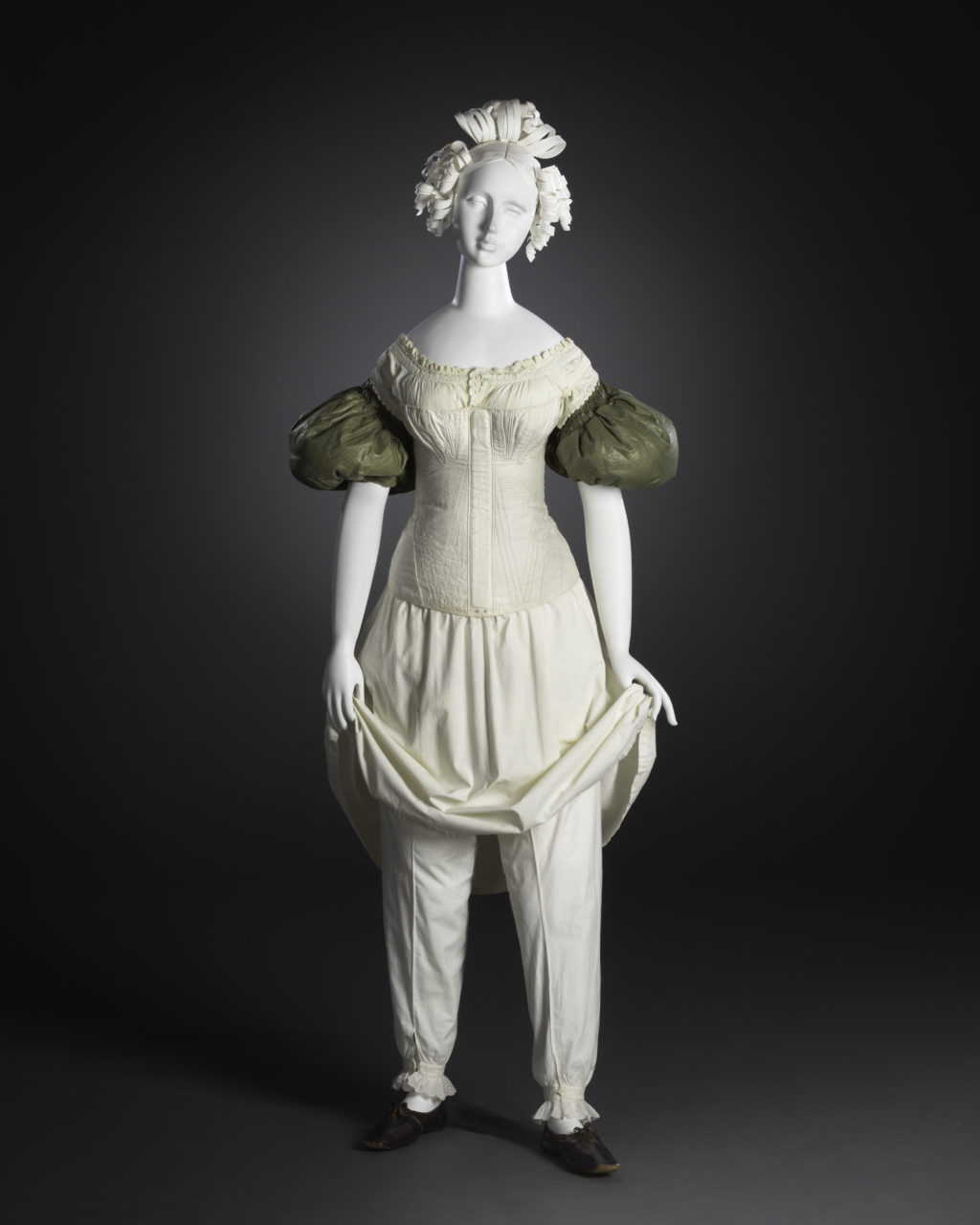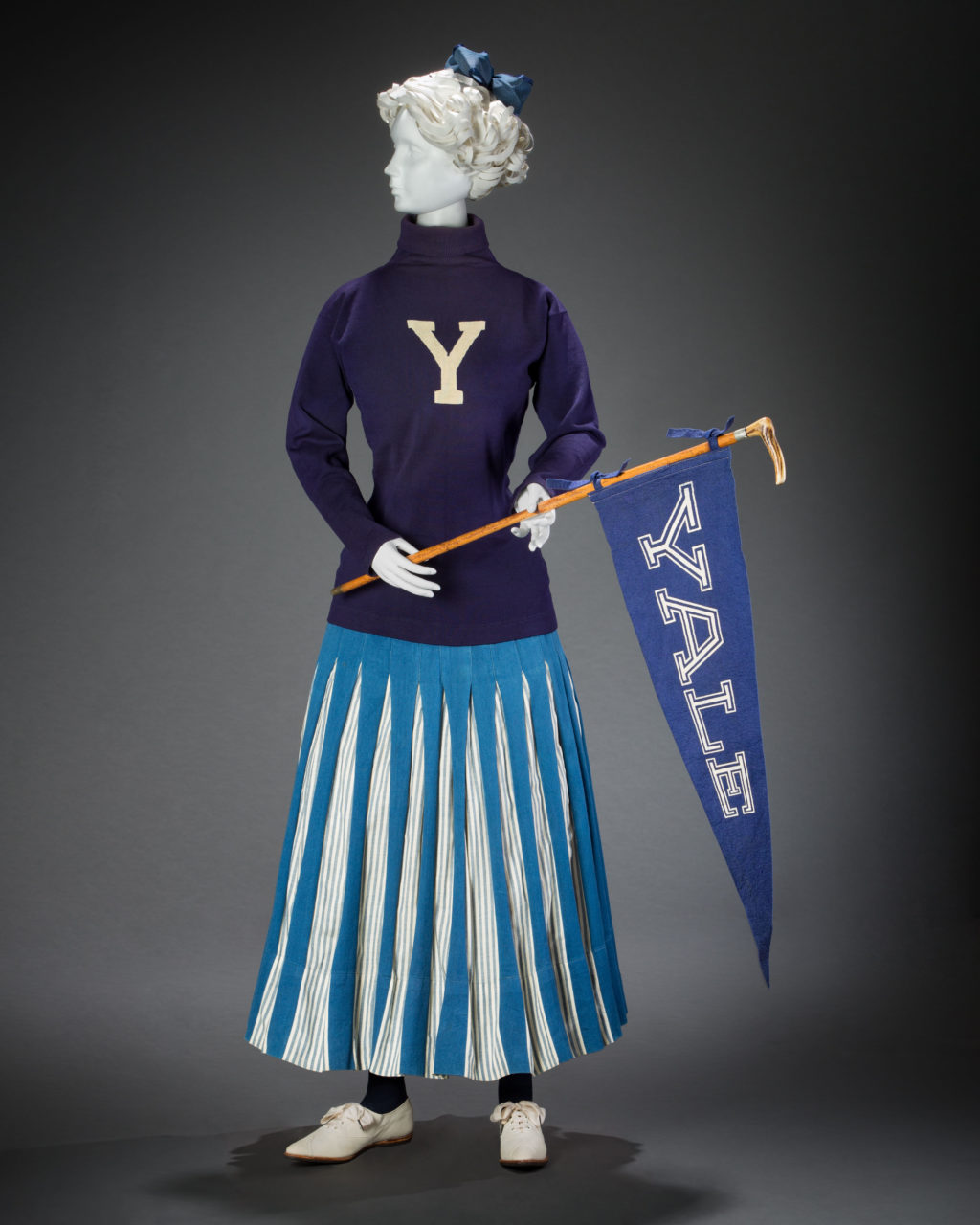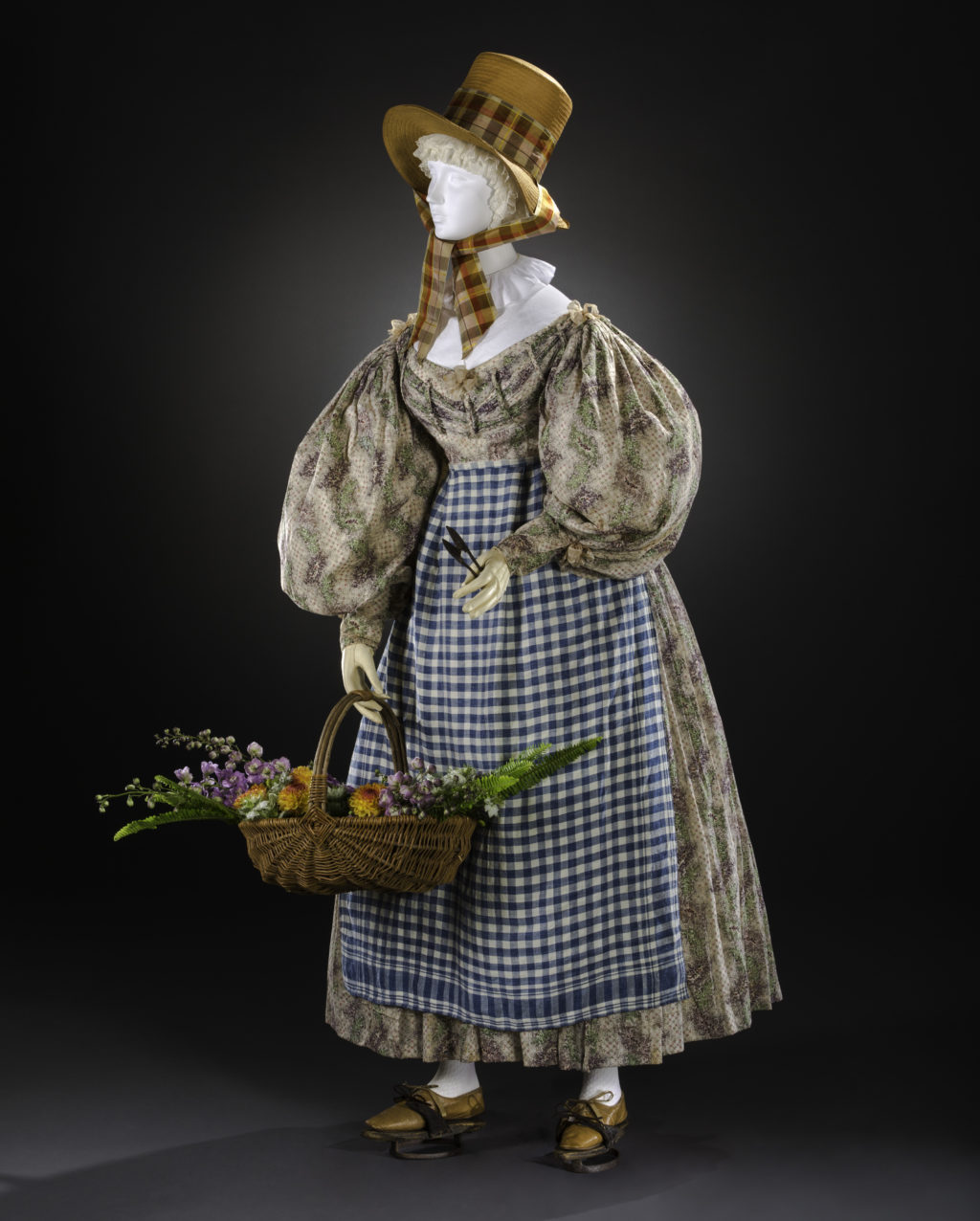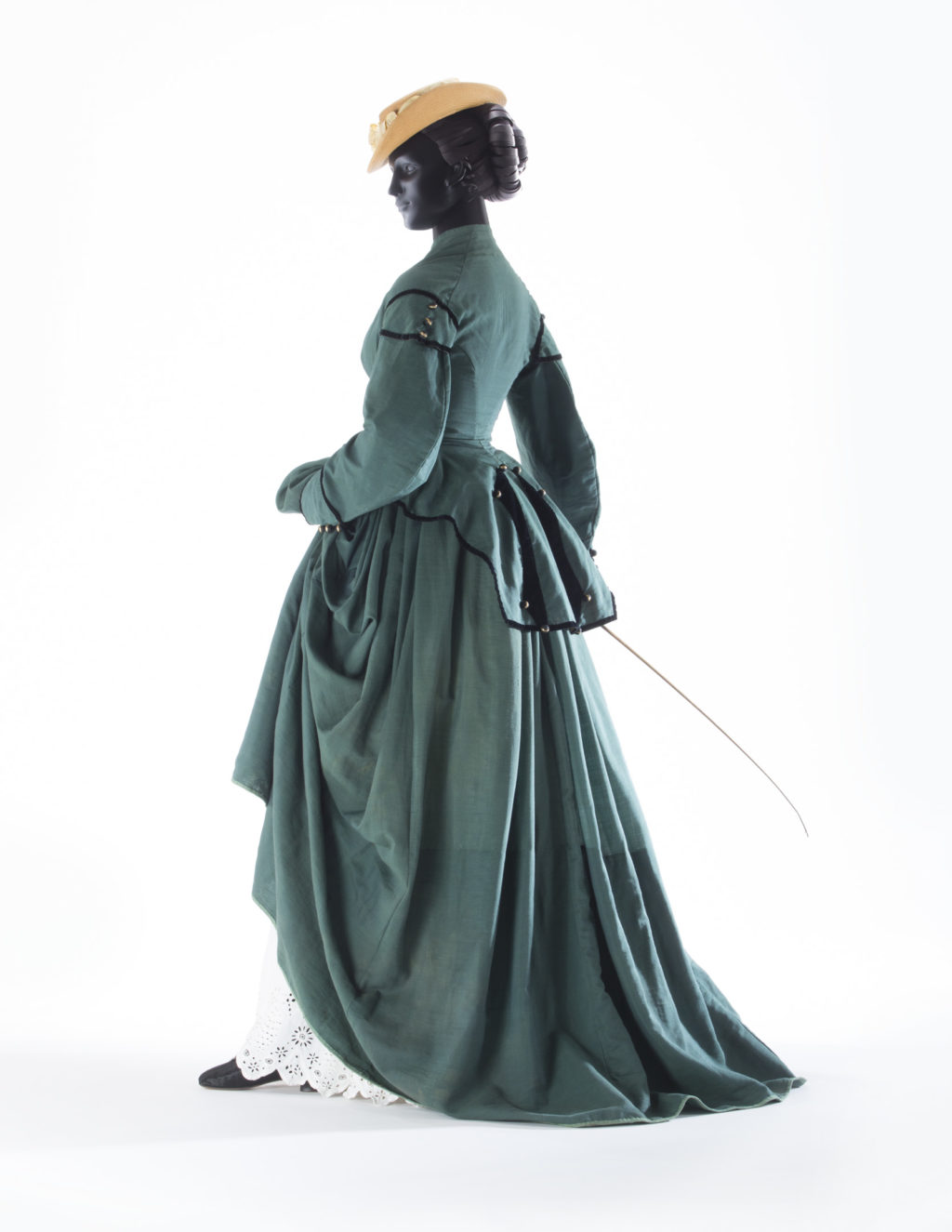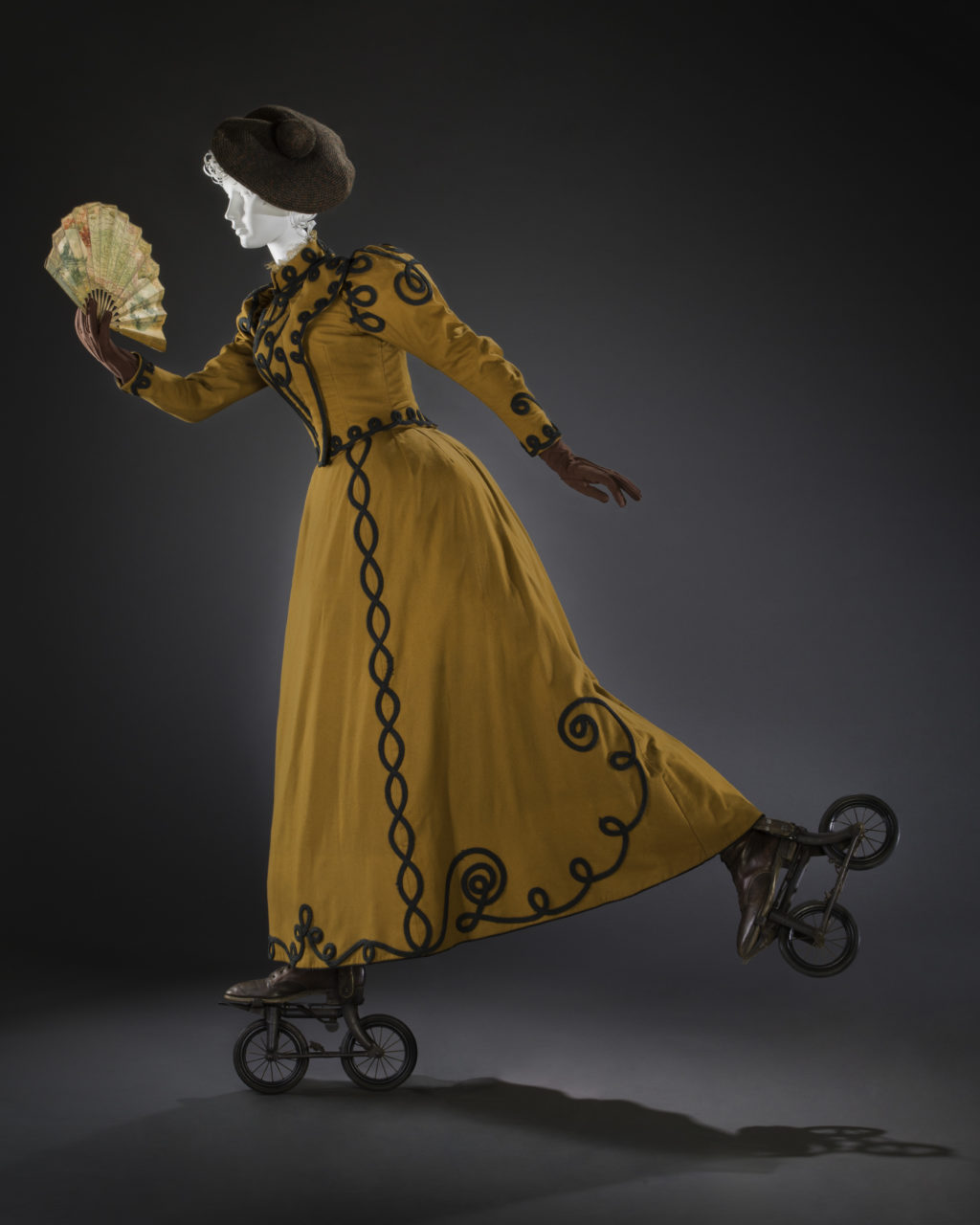First exhibition to explore the evolution of women’s sporting attire in Western fashion from 1800 to 1960 brings together 480 historic objects from the exceptional collection of the FIDM Museum, Los Angeles.
(NEW YORK, June 1, 2021)— The American Federation of Arts (AFA) is pleased to announce the opening of Sporting Fashion: Outdoor Girls 1800 to 1960, a traveling exhibition organized by the American Federation of Arts and the FIDM Museum at the Fashion Institute of Design & Merchandising, Los Angeles. Sporting Fashion is the first exhibition to explore the evolution of women’s sporting attire in Western fashion over this 160-year period. The exhibition includes sixty-five fully accessorized ensembles comprised of more than 480 historic objects selected from the exceptional collections of the FIDM Museum. Opening July 3, 2021, the exhibition debuts at The Frick Pittsburgh, PA (July 3–September 26, 2021) and subsequently will travel to seven institutions across the United States through 2024, including presentations at the Dixon Gallery and Gardens, Memphis, TN (July 24–October 16, 2022); the Figge Art Museum, Davenport, IA (February 11–May 7, 2023); the Munson-Williams-Proctor Arts Institute, Utica, NY (June 17–September 17, 2023); the Taft Museum of Art, Cincinnati, OH (October 14, 2023–January 14, 2024); and the Cummer Museum of Art & Gardens in Jacksonville, FL (February 24–May 19, 2024); with its final stop at the FIDM Museum in Los Angeles, CA. Visit https://www.amfedarts.org/sporting-fashion/ for details of the national tour.
The exhibition includes garments and accessories from long-established sportswear brands such as Champion, Pendleton, Spalding, and Stetson, in addition to garments and accessories from key fashion brands such as Abercrombie & Fitch, Balenciaga, Chanel, Hermès, Patou, Pucci, and Schiaparelli.
“It’s an absolute delight to share this fascinating presentation of women’s activewear with a range of museum audiences,” said Pauline Willis, Director and CEO of the American Federation of Arts. “Covering athletic pursuits from fencing to motorcycling, Sporting Fashion: Outdoor Girls 1800 to 1960 offers valuable insight into the cultural, economic, and technical motives behind women’s sporting attire. As dialogues regarding women’s parity in athletics continue, Sporting Fashion enriches the conversation, illustrating the dynamic ways that modern women engaged in sport during the nineteenth and twentieth centuries.”
“This fifteen-year project took us down many paths as we gathered together the very rare objects, many not found in other museum collections,” said Kevin L. Jones, Curator at the FIDM Museum. “Not only are we displaying more than sixty-five original ensembles, but we are excited to highlight sixteen sportswomen, and their varied accomplishments, whom most people will not have heard of before. Every single woman you see represented in these clothes was the modern woman, whether it was the 1820s or the 1920s.”
”Representing the modern athlete of today, we are honored that Serena Williams—international tennis champion and fashion icon—wrote the foreword to the exhibition catalogue,” said Barbara Bundy, Director of the FIDM Museum.
EXHIBITION DETAILS
Sporting Fashion: Outdoor Girls 1800 to 1960 highlights the ensembles that defined women’s participation in the sporting world as athletes and spectators. The exhibition begins at the turn of the nineteenth century, outside the domestic sphere, and concludes with the mid-twentieth century when basic forms of women’s sportswear we know today were codified. Examining the competing priorities of fashion, function, and propriety, Sporting Fashion will feature sixty-five fully accessorized ensembles and a selection of sport-related accessories and ephemera, all drawn from the exceptional collections of the FIDM Museum.
The subtitle Outdoor Girls is inspired by the printed script on a circa 1946 wool scarf, which depicts women engaged in thirteen different sports, including golf, horseback riding, ice-skating, and tennis. The exhibition will include ensembles worn for over forty other outdoor activities over the course of the nineteenth and twentieth centuries, each carefully assembled based upon extensive primary-source research. The exhibition will include ensembles for activities ranging from traveling to calisthenics, and from motorcycling to promenading.
Organized into six themes, Sporting Fashion: Outdoor Girls 1800 to 1960 will explore how clothing met the needs of new pursuits for women, while at the same time preserving their socially approved, restricted mobility. Garments for swimming and tanning will illustrate how innovative designers and manufacturers responded to the increasing acceptance of exposed skin at beaches and pools; winter sports ensembles will show how apparel for pastimes such as skiing and ice-skating protected female participants from the elements; and ensembles for cycling, motoring, and flying—often adapted from men’s athletic gear—will reveal how women navigated open roads and skies. To complement the artifacts on view, a timeline of key events and biographies of sixteen important sportswomen will further situate sporting fashion in the broader context of women’s social history. Themes explored in the exhibition include:
Stepping Outdoors: Illustrates how women who dressed for leisurely outdoor pursuits in the early nineteenth century were required to maintain proprieties considered socially necessary for their times. As women increasingly ventured away from home, new sports emerged, and fashions designed for daily wear transitioned to those intended for particular sporting activities.
Taking the Reins: Represents traditions of riding and wrangling horses, as well as attire for the park paths and arenas where equestrian enthusiasts mingled.
Making Waves: Explores how designers both reacted to and encouraged the growing acceptance of exposed skin at public beaches and pools.
Subzero Style: Surveys numerous activities on snowy slopes and frozen rinks.
Wheels and Wings: Traces women’s ventures into the previously male-dominated realm of mechanized sports as they enjoyed increased freedom of travel via road and sky.
A Team Effort: Shows the advent and evolution of warm-weather ball sports that could be played on manor lawns and in public parks, and later in arenas. The section also celebrates female athleticism and competition, and considers the development of regulation uniforms on courts and fields, and in gymnasia.
PUBLICATION
A foreword by Serena Williams, offering a contemporary and personal perspective on the role of fashion in sport, opens the accompanying illustrated 344-page catalogue. The book provides both a stunning visual record of the garments on display and serves as important point of reference for further research into women’s sporting attire. The catalogue features an introductory essay and detailed entries on each ensemble in the exhibition, co-written by curators Kevin L. Jones and Christina M. Johnson. It is one of the very few authoritative publications on the diverse aspects of women’s sport history and the development and evolution of their athletic attire.
CURATORS
Kevin L. Jones began his career at the FIDM Museum in 1999 and has served as Curator since 2002. Christina M. Johnson began her career at the FIDM Museum in 2003 and has served as Associate Curator since 2010. Together, Jones and Johnson have curated such exhibitions as High Style: Betsy Bloomingdale and the Haute Couture (2009) and FABULOUS! Ten Years of FIDM Museum Acquisitions, 2000–2010 (2011), and in 2013, they organized Modern Love: Fashion Visionaries from the FIDM Museum, LA with the Bendigo Art Gallery, Australia.
CREDIT
Sporting Fashion: Outdoor Girls 1800 to 1960 is organized by the American Federation of Arts and the FIDM Museum at the Fashion Institute of Design & Merchandising, Los Angeles.
Support for the national tour is provided by the AFA’s Gold Medal Circle: Elizabeth Belfer, Stephanie Borynack Clark, Ashleigh Fernandez, Lee White Galvis, Stephanie R. La Nasa, Merrill Mahan, Clare E. McKeon, Jennifer New, Angela Timashev, and Victoria Ershova Triplett.
ABOUT THE AMERICAN FEDERATION OF ARTS
The American Federation of Arts is the leader in traveling exhibitions internationally. A nonprofit institution founded in 1909, the AFA is dedicated to enriching the public’s experience and understanding of the visual arts through organizing and touring art exhibitions for presentation in museums around the world, publishing scholarly exhibition catalogues, developing innovative educational programs, and fostering a better understanding among nations through the international exchange of art.
ABOUT THE FIDM MUSEUM
The FIDM Museum is a nonprofit institution, founded in 1978. It collects, preserves, and interprets fashion objects and support materials with outstanding design merit. It fosters student learning, public engagement, and recognition of the creative arts and entertainment industries by providing access to the collections through exhibitions, publications, and other research opportunities. The FIDM Museum has one of the nation’s finest fashion collections of more than 15,000 objects, dating from the seventeenth century to the present, and yearly presents major exhibitions.
Press contact: Shawna Gallancy, sgallancy@amfedarts.org, 212.988.7700 x 205.
